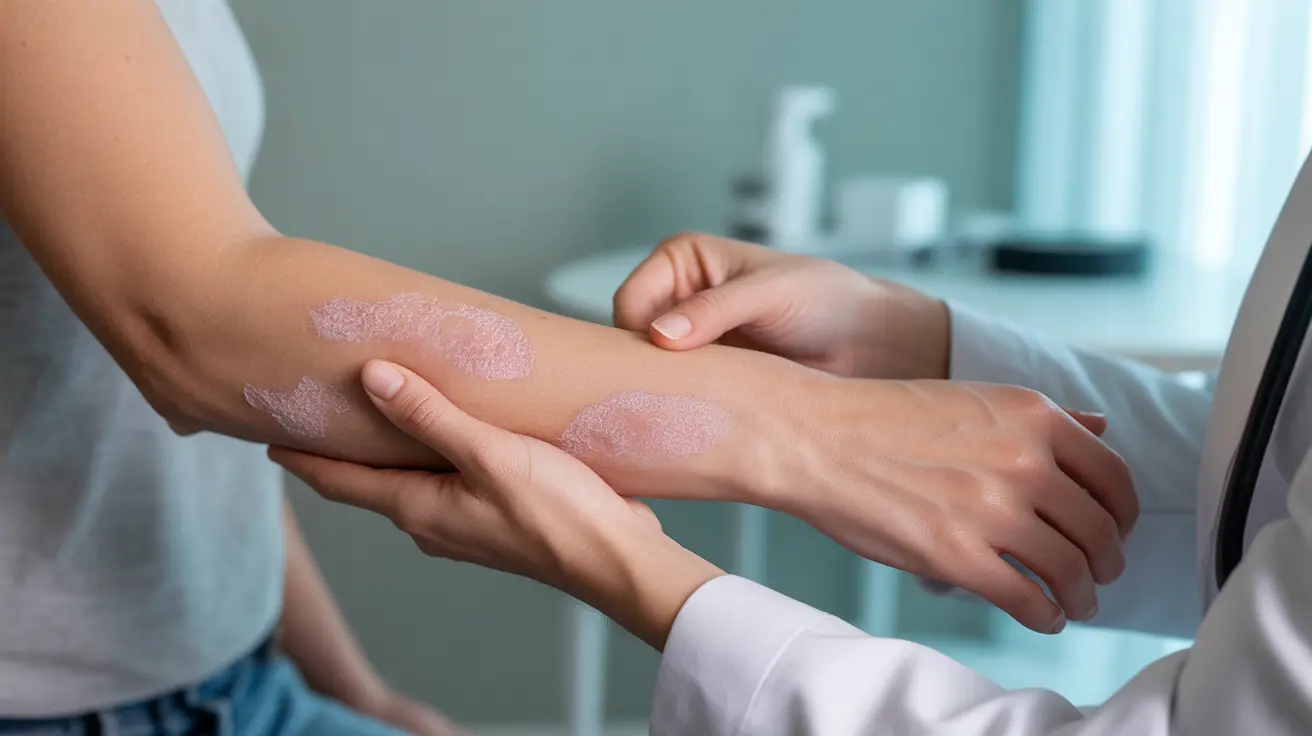The Psoriasis Area and Severity Index (PASI) score is a crucial tool that healthcare providers use to assess the severity of psoriasis and monitor treatment effectiveness. This standardized measurement system helps doctors make informed decisions about treatment options and evaluate how well patients respond to different therapies.
Whether you're newly diagnosed with psoriasis or managing an ongoing condition, understanding PASI scores can help you better comprehend your treatment journey and communicate more effectively with your healthcare team.
What Is a PASI Score?
A PASI score is a numerical rating system that measures both the severity and extent of psoriasis on different body areas. This comprehensive assessment takes into account four key body regions: the head, trunk, upper extremities, and lower extremities.
Healthcare providers evaluate three main characteristics of psoriasis lesions in each body area:
- Redness (erythema)
- Thickness (induration)
- Scaling (desquamation)
How PASI Scores Are Calculated
The calculation of a PASI score involves a systematic evaluation process that considers both the severity of symptoms and the percentage of affected area in each body region. Each region is weighted differently based on its proportion of total body surface area:
- Head and neck: 10% of total body surface
- Upper extremities: 20% of total body surface
- Trunk: 30% of total body surface
- Lower extremities: 40% of total body surface
The final PASI score can range from 0 to 72, with higher numbers indicating more severe disease. Generally, a PASI score greater than 10 is considered moderate to severe psoriasis.
Understanding PASI Treatment Goals
In clinical practice, healthcare providers often use specific PASI improvement targets to assess treatment success. The most commonly referenced targets include:
- PASI 75: 75% improvement from baseline
- PASI 90: 90% improvement from baseline
- PASI 100: Complete clearance of psoriasis
These targets help doctors determine whether a treatment is working effectively and guide decisions about maintaining or modifying therapy approaches.
Impact of Treatment Choices on PASI Scores
Different treatment options can significantly affect PASI scores. Common treatments include:
- Topical medications
- Phototherapy
- Systemic medications
- Biologic therapies
The choice of treatment often depends on initial PASI scores, with more aggressive therapies typically reserved for patients with higher scores indicating more severe disease.
Lifestyle Factors and PASI Scores
While medical treatments are essential, various lifestyle factors can influence psoriasis severity and, consequently, PASI scores:
- Stress management
- Dietary choices
- Physical activity
- Smoking cessation
- Alcohol moderation
Making positive lifestyle changes can complement medical treatments and potentially help improve PASI scores over time.
Frequently Asked Questions
How is a PASI score calculated for psoriasis, and what does it measure?
A PASI score measures psoriasis severity by evaluating redness, thickness, and scaling of lesions across four body regions. Each region is weighted differently, and scores range from 0 to 72. The calculation considers both the severity of symptoms and the percentage of affected area in each body region.
What are the treatment options for severe psoriasis, and how does the PASI score influence these choices?
Treatment options include topical medications, phototherapy, systemic medications, and biologics. Higher PASI scores (typically >10) often indicate the need for more aggressive treatments like systemic or biologic therapies, while lower scores might be managed with topical treatments or phototherapy.
What does achieving PASI 75 mean in terms of psoriasis treatment success?
PASI 75 represents a 75% improvement in psoriasis symptoms compared to the baseline PASI score. This is considered a significant clinical response and is often used as a benchmark for treatment success in clinical trials and practice.
Can lifestyle changes affect PASI scores or improve psoriasis symptoms?
Yes, lifestyle modifications can impact PASI scores. Stress reduction, healthy diet, regular exercise, smoking cessation, and limiting alcohol intake can all contribute to better psoriasis control and potentially improved PASI scores when combined with medical treatment.
How does the PASI score differ from other measures of psoriasis severity, and which one is most commonly used?
While other measures exist, such as the Physician Global Assessment (PGA) and Body Surface Area (BSA), PASI is considered the gold standard for measuring psoriasis severity in clinical trials and practice. It's more comprehensive and provides a more detailed assessment of disease severity across different body regions.




